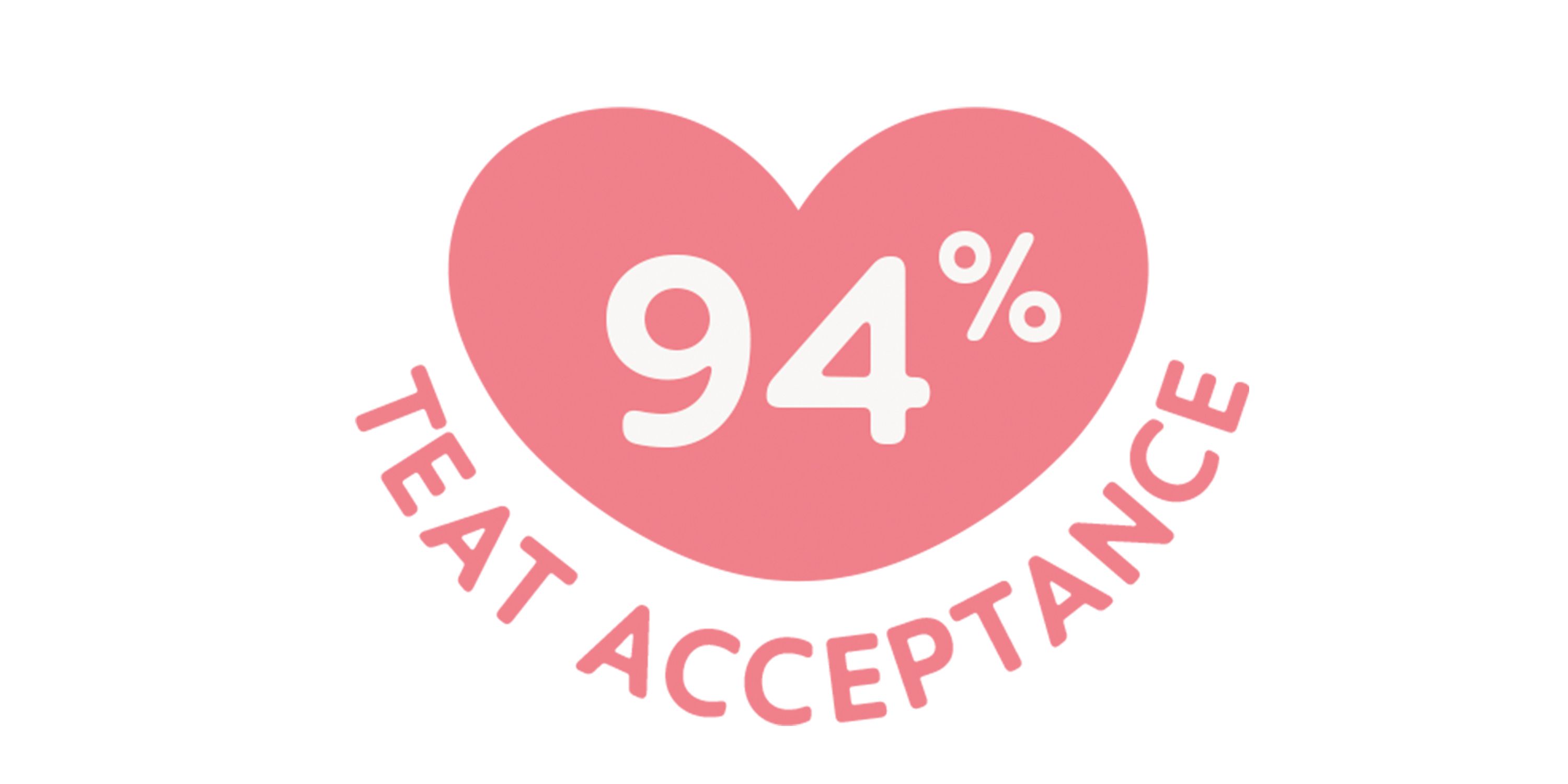We have developed the MAM Perfect pacifier with a patented extra-thin and flexible teat for more natural mouth closure to reduce the risk of misaligned teeth and support a healthy dental development for your baby.
MAM Perfect Pacifier Benefits
Our MAM Perfect unique teat shape is 60% thinner and 4x more flexible than comparable pacifier teats.¹ This extra-thin pacifier teat allows your baby to close the mouth in a more natural position, enabling a more natural tongue position, which is important for speech development.
MAM Perfect Pacifier age ranges
At MAM, we believe in providing the best care for your baby at every stage of their development. That's why the MAM Perfect pacifier is available in different sizes, ensuring a perfect support throughout your baby’s dental development.

How to sterilize a pacifier?
- Fill box with water to the 25ml mark
- Place pacifier in the box with the holder
- Close box and heat in microwave for 3 minutes at 750-1000 watts

Sustainability at MAM
Climate-neutral products
We are constantly striving to reduce the CO2 emissions of our products. Of course, this is no easy task and takes time. We have taken a first step by converting some of our products to polypropylene traceable to biocircular raw materials1 and have thus taken an important step towards decoupling from fossil raw materials. Nevertheless, CO2 emissions continue to be generated along the value chain for these products. In order to fulfill our responsibility for climate protection in the meantime, until we have implemented further measures, we are making the CO2 emissions of these products climate-neutral. This is possible through the financial support of climate protection projects. We have taken the following three steps to make our polypropylene products climate-neutral and traceable to biocircular raw materials5 :
- Calculate: We have calculated the CO2 emissions of our products together with Climate Partner and created a product carbon footprint (PCF): we have considered the raw materials, logistics, packaging and disposal according to the cradle-to-customer plus end-of-life approach.
- Reduce: The use of polypropylene traceable to biocircular raw materials1 saves CO2 emissions compared to fossil polypropylene. In addition, we at MAM are constantly working to implement CO2 reduction measures, such as the expansion of our PV systems and energy efficiency measures in our production facilities.
- Compensate: We offset any remaining CO2 emissions by supporting certified climate protection projects. We work together with Climate Partner to do this. We are particularly keen to support projects that also promote the health and well-being of babies and families worldwide.
More information on our climate protection projects at https://fpm.climatepartner.com/tracking/19613-2205-1001/de
Sources:
1.) Scientific reports from Wild Hi-Precision institute verify that the MAM Perfect’s teat neck is on average 60% thinner. A series of tests by the University Clinic of Dentistry Vienna confirm that it is also on average 4 times more flexible than comparable pacifiers. (Between: 32-83% thinner and 1.1-19.5 times more flexible than regular silicone pacifiers).
2.) Y. Wagner, R. Heinrich-Weltzien, “Effect of a thin-neck pacifier on primary dentition: a randomized controlled trial”, Orthodontics & Craniofacial Research, Volume 19, Issue 3, pages 127–136, August 2016
3.) Market research 2010-2022, tested with 1,541 babies.
4.) Global Product Carbon Footprint Study, Austria 2013, conducted by denkstatt.
5.) Based on the ISCC PLUS certified mass balance approach, bio-circular raw materials can be traced back to vegetable oils as well as waste and residues from the production of plant-based oils.
























